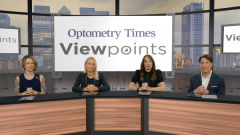
Limitations of Current Dry Eye Therapies
In this segment, the expert panel addresses one of the most challenging aspects of dry eye management: engaging frustrated patients who have seen multiple clinicians without meaningful relief. The faculty note that by the time these individuals reach a dry eye specialist, many have lost hope, feel dismissed, or are emotionally exhausted from living with constant ocular discomfort. The panel emphasizes that validation and empathy are essential first steps—acknowledging the chronic, psychologically taxing nature of the disease immediately helps patients feel heard. They describe strategies that rebuild trust, including clearly explaining findings during the exam, demonstrating abnormalities the patient can feel or visualize, and confidently outlining a tailored plan. The experts also find it helpful to show patients a comprehensive list of available treatments, reinforcing that many options remain. The panel highlights the importance of frequent follow-ups—often at 4 weeks, then every 3–6 months—to maintain partnership, monitor progress, and ensure patients never feel abandoned in their care. They also stress collaboration with local physicians for those traveling long distances, reinforcing continuity and shared control in management.
In this segment, the expert panel addresses one of the most challenging aspects of dry eye management: engaging frustrated patients who have seen multiple clinicians without meaningful relief. The faculty note that by the time these individuals reach a dry eye specialist, many have lost hope, feel dismissed, or are emotionally exhausted from living with constant ocular discomfort. The panel emphasizes that validation and empathy are essential first steps—acknowledging the chronic, psychologically taxing nature of the disease immediately helps patients feel heard.
They describe strategies that rebuild trust, including clearly explaining findings during the exam, demonstrating abnormalities the patient can feel or visualize, and confidently outlining a tailored plan. The experts also find it helpful to show patients a comprehensive list of available treatments, reinforcing that many options remain.
The panel highlights the importance of frequent follow-ups—often at 4 weeks, then every 3–6 months—to maintain partnership, monitor progress, and ensure patients never feel abandoned in their care. They also stress collaboration with local physicians for those traveling long distances, reinforcing continuity and shared control in management.
Newsletter
Want more insights like this? Subscribe to Optometry Times and get clinical pearls and practice tips delivered straight to your inbox.


















































.png)


